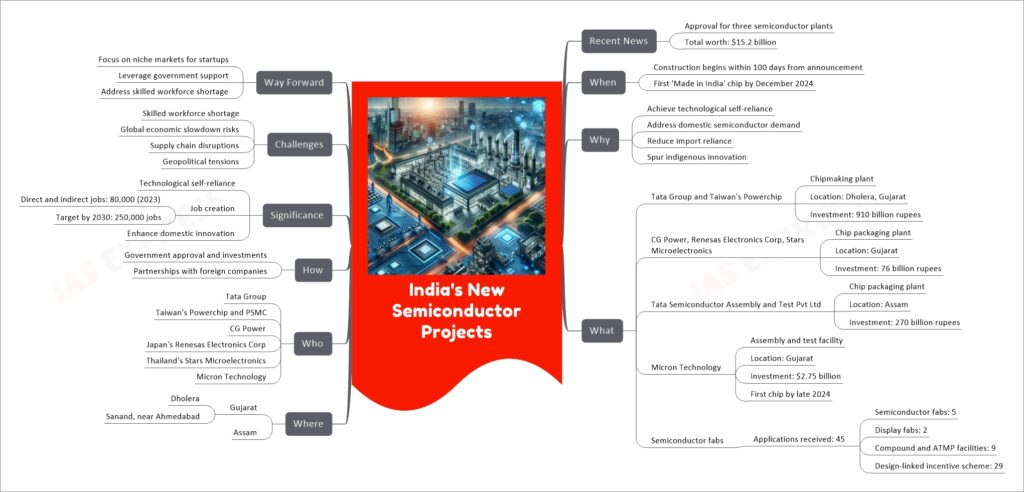India’s New Semiconductor Projects

India’s new semiconductor projects are a significant step towards achieving technological self-reliance and enhancing domestic innovation. The government has approved three semiconductor plants worth $15.2 billion, which include chipmaking and packaging facilities in Gujarat and Assam. Partnerships with foreign companies like Taiwan’s Powerchip and Micron Technology are central to these projects. The initiative is expected to create a substantial number of jobs and boost indigenous innovation across vital sectors. However, challenges such as the skilled workforce shortage, potential global economic slowdown, and supply chain disruptions need to be addressed. The focus on niche markets for startups and leveraging government support are seen as ways forward.

